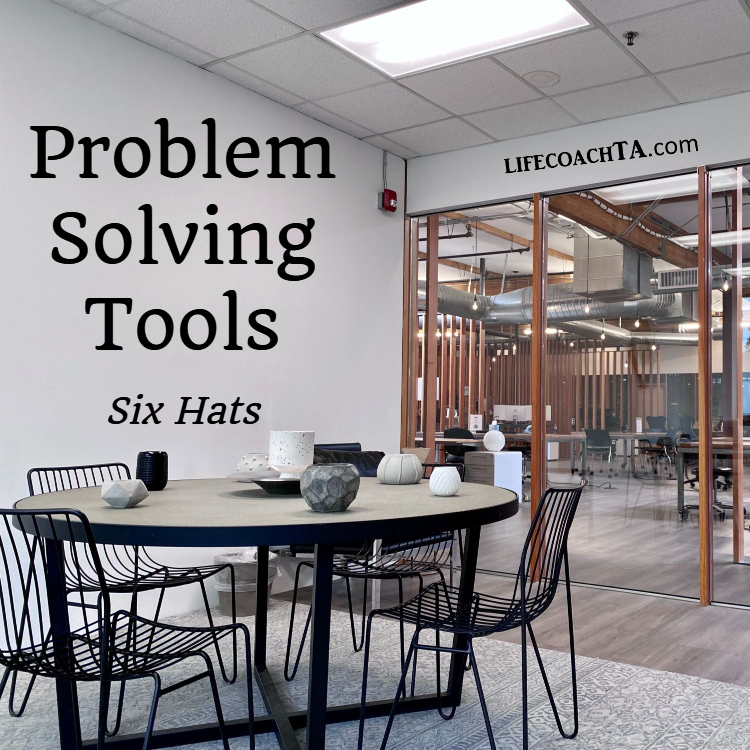This is a creative problem-solving method that lets you quickly switch from one perspective to another to see all the different sides of the problem and come up with a solution that helps everyone.
With this problem-solving skill, you view the situation from different hats, changing the hat to view the situation from various perspectives. As a visual, change the hat, then list all the issues around the color of the hat you are currently using. In a group environment, each person takes a turn “wearing” each hat. You can also do this by yourself. Switch hats. Or as I use the process, instead of hats, use different colored scarves. Whatever works best to provide the visual to help you modify from one perspective to another.
The six hats are color-coded based on what perspective they stand for. Here’s a short description of each.
White Hat: This hat represents neutrality and objectivity. You use this hat to remind you to focus on and make a list of relevant facts and figures about the issue.
Red Hat: This is the subjective, or emotional hat. When you use this hat, everyone expresses their emotions regarding the issue or problem. This is also good for getting instinctive reactions to proposed solutions.
Black Hat: This is the devil’s advocate hat. Use this hat to get critical about ideas and proposed solutions so that you are less likely to make bad choices.
Yellow Hat: This is the positive hat. Everything is good when wearing this hat, Use it to find the positive features of the situation and/or proposed solutions.
Green Hat: Your Green Hat is your creative hat. It is what you wear when you are trying to generate new ideas or solutions. In some ways, this could be the most important of the six hats.
Blue Hat: Organization is the goal of the Blue Hat, Here you will decide on outlines, objectives, goals, definitions, etcetera. Use this both at the beginning and end of your problem-solving sessions,
The idea behind the Six Hats method is to make visible different perspectives and open the floor to compare ideas from different points of view. Both perspective and review are crucial problem-solving skills, even if you are trying to be creative!
As a bonus, this method also works great for teams to understand how each member thinks, to fix communication errors, and to come to an agreement on what will work best to solve the issue for all stakeholders.

